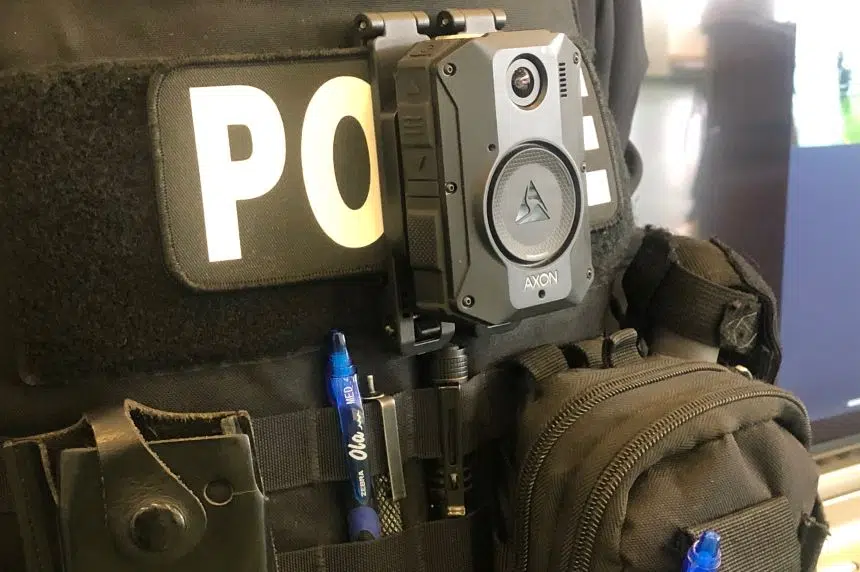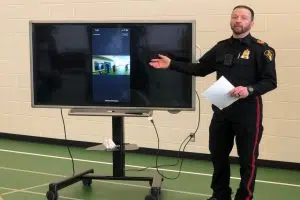Over the next month, Saskatoon Police Service officers will be training how, when and where to use body cameras.
A new, nearly $500,000 two-year pilot project is underway to assess the cameras’ effectiveness, usefulness and cost.
According to Chief Troy Cooper, body-worn cameras are already being used in Calgary and Toronto, and the RCMP has also committed to eventually using them.
Saskatoon will have 40 cameras to use over the next couple of years. Sgt. Thomas Gersty said there’s no hard date when officers will begin wearing them out on patrol.
“Our hope is to have them deployed within two or three weeks of this training,” he said. “We’re looking to mid- to late March.
“But again, we can’t anticipate any potential obstacles that might pop up in the next couple of weeks and we’re not going to deploy them until we’re 100 per cent ready to do it properly.”
Gathering digital evidence isn’t new to the Saskatoon Police Service. It already has in-car cameras and detention videos.
Now, Cooper says wearing a body camera is becoming an accepted form of helping to solve crimes, for mental health calls, and even for traffic stops.
“So this is just an opportunity for us to I think to expand the use of digital evidence for a number of different benefits to the service. And to do it in a small way first, to see what needs to be tweaked and what the overall expenses (are) going to be so we can properly evaluate the program once it’s fully functional,” he said.
Privacy and the ability for a member of the public to refuse being recorded in a given circumstance remain some of the top concerns. According to Gersty, that’s being addressed with an internal policy on when, where and what is appropriate to record.
“Secondly, once we record, it’s the security of that video, that recording. And all videos are all securely stored in a Cloud-based storage system,” he said. “Access to that video is fully restricted.”
The Cloud service system is Canadian, and Saskatoon police will own all recordings, which will be kept for a minimum of two years. Access to videos will be restricted to the officer who made the recording, their supervisor and potentially other investigation units depending on the case.
Officers will have the choice to cover the lens, to turn the camera away momentarily, or to turn the lights of on the camera depending on the safety of the situation. They won’t have the option to edit or to delete any recordings.
“When it comes to people wanting to be recorded or objecting to be recorded, that depends on the officer’s lawful attendance at the location they’re at. And of course that’s different for a public place (and) different for a private place. There’s going to be areas with a heightened sense of privacy like a health-care facility, like a school (or) like a law office,” Gersty added.
Videos will not be made available to the public unless a Freedom of Information request has been approved.
There have been Charter challenges in other cities of body-worn camera footage, Gersty acknowledged. He expects that could happen in some circumstances in Saskatoon as well.
“If in fact it is a Charter breach, then the normal course of action would be the fact that … the video, which is evidence, will likely not be used in court,” he explained.
According to Cooper, the success of the program will be measured by a reduction in court and wait times for public complaints. Officers will assess whether they meet community needs.
In many cases, he said, people believe officers are already wearing the cameras.












